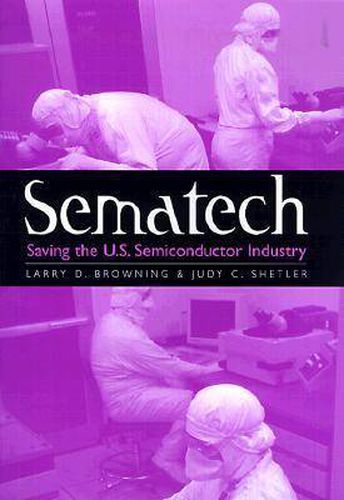Readings Newsletter
Become a Readings Member to make your shopping experience even easier.
Sign in or sign up for free!
You’re not far away from qualifying for FREE standard shipping within Australia
You’ve qualified for FREE standard shipping within Australia
The cart is loading…






Although the microchip is an American invention, early, unbridled competition among U.S. companies and the worldwide race for new products allowed the Japanese to move in on the microchip market. By the mid-1980s, Japan dominated the industry, in this country as well as abroad, and the U.S. semiconductor industry faced irrecoverable loss of production capability. Desperation led to the creation of Sematech. In Sematech, Larry D. Browning and Judy C. Shetler trace the history of Sematech, a consortium formed by fourteen major American semiconductor manufacturers and the U.S. government. Sematech’s founders were aware that consortia emphasizing cooperative research had been unsuccessful; Sematech planned a different approach. Its founding charter stated its goal: To provide the U.S. semiconductor industry the capability for world leadership in manufacturing ; in other words, improve core manufacturing competence without making end products.
By 1994, U.S. chip makers were once again ahead in global market share, and Sematech began to phase out government funding. Sematech’s success was based on first identifying the companies with the best operating solutions to each problem and then disseminating these practices to the industry.
Sematech not only provided a solution to many problems of the U.S. semiconductor industry, it also provided a template for other public/private enterprises. Examining what Sematech did and how it did it is important to the health of the U.S. economy in an increasingly multinational competitive environment.
Browning and Shetler’s well-written, thoughtful history will inform and engage business historians, managers, public policy scholars, and others interested in the development and success of the U.S. computer chip industry and the application of its techniques to other fields of business.
$9.00 standard shipping within Australia
FREE standard shipping within Australia for orders over $100.00
Express & International shipping calculated at checkout
Stock availability can be subject to change without notice. We recommend calling the shop or contacting our online team to check availability of low stock items. Please see our Shopping Online page for more details.
Although the microchip is an American invention, early, unbridled competition among U.S. companies and the worldwide race for new products allowed the Japanese to move in on the microchip market. By the mid-1980s, Japan dominated the industry, in this country as well as abroad, and the U.S. semiconductor industry faced irrecoverable loss of production capability. Desperation led to the creation of Sematech. In Sematech, Larry D. Browning and Judy C. Shetler trace the history of Sematech, a consortium formed by fourteen major American semiconductor manufacturers and the U.S. government. Sematech’s founders were aware that consortia emphasizing cooperative research had been unsuccessful; Sematech planned a different approach. Its founding charter stated its goal: To provide the U.S. semiconductor industry the capability for world leadership in manufacturing ; in other words, improve core manufacturing competence without making end products.
By 1994, U.S. chip makers were once again ahead in global market share, and Sematech began to phase out government funding. Sematech’s success was based on first identifying the companies with the best operating solutions to each problem and then disseminating these practices to the industry.
Sematech not only provided a solution to many problems of the U.S. semiconductor industry, it also provided a template for other public/private enterprises. Examining what Sematech did and how it did it is important to the health of the U.S. economy in an increasingly multinational competitive environment.
Browning and Shetler’s well-written, thoughtful history will inform and engage business historians, managers, public policy scholars, and others interested in the development and success of the U.S. computer chip industry and the application of its techniques to other fields of business.